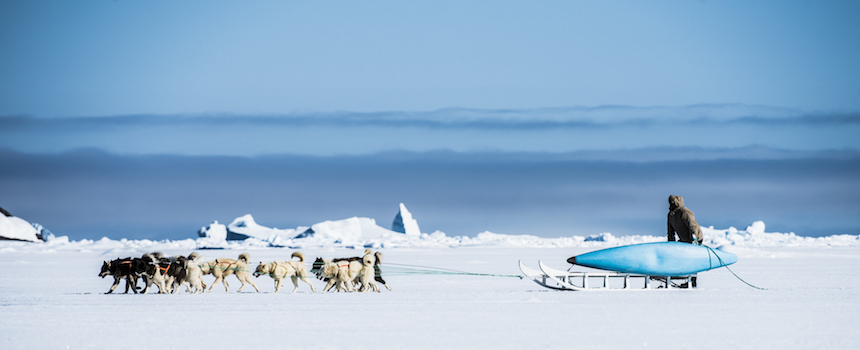Warren Miller Travel 411: Greenland
Where land meets sea
Photos by Mike Arzt
Greenland is one of the most desolate places in the world a person can travel to ski. A lot of the skiable terrain requires a boat, helicopter, a healthy amount of hiking or a combination of them all to access it. But, with the right amount of planning, it can be the ski trip of a lifetime.
For the less burly skiers, there is plenty of low-angle, yet spectacular skiing to be had, complete with breathtaking views. For the more experienced riders looking for a thrill, steeper and longer pitches, couloirs and other interesting features dot the landscape. Or, if you’re just looking to see some beautiful scenery, consider a cross country ski trip or via dog sleds.

What the Pros and Locals say:
“Greenland just has something that’s next-level as far as the scenery and unexplored terrain and just so much variety…” - Rob Kingwill, professional snowboarder
“We did really big runs that seemed like they went on forever and ended up right at the edge of this giant bay with huge icebergs. Every experience is almost a little surreal.” - Seth Wescott, professional snowboarder
“Daunting, harsh, and beautiful.” – Michelle Parker, professional skier

Lodging: Take your choice of more traditional hotel accommodations closer to Maniitsoq, or opt for an igloo, trail hut or remote lodge deep in the backcountry with front-row views of Greenland’s iconic glaciers.
Getting There: Fly into Maniitsoq and head to the southwest near the Eternity Fjord for some skiing. Or, head to the southeastern part of the country to Kulusuk island where skiers can ride approximately 6,500 vertical feet of untapped terrain stemming from the ice cap-dotted sea.
Don’t Miss: Book a tour with Greenland Heliskiing (greenlandheli.com) to explore the East Coast, including Kulusuk Island. You’ll spend up to five days in the remote Tasiilaq Mountain Hut, touring the nearby high glacial region.
Go Now: Because of climate change, the landscape is changing rapidly. Like Antarctica, the giant region is losing more than three times as much ice each year as it did in the 1990s. The terrain is projected to change rapidly over the next several decades.

